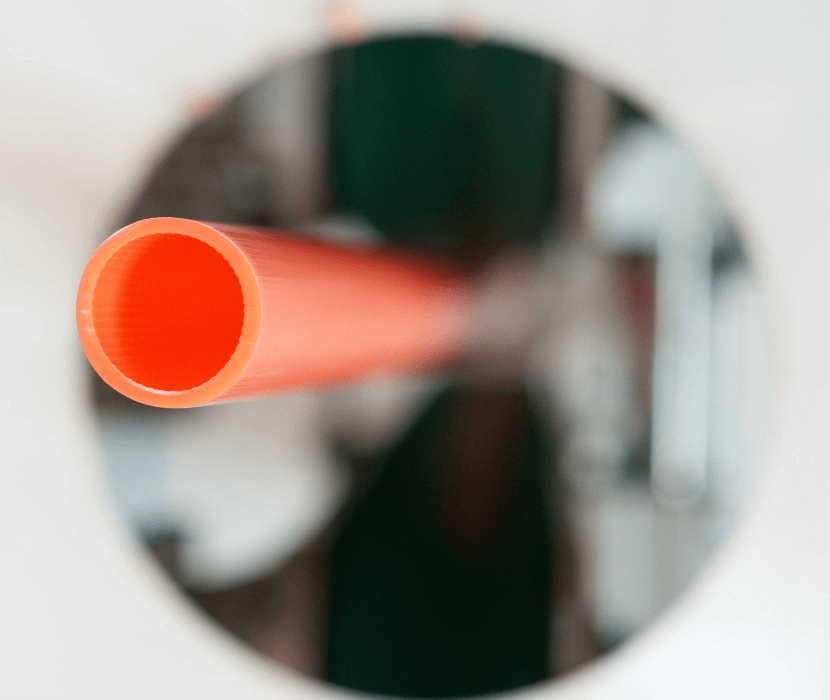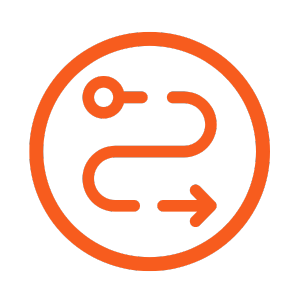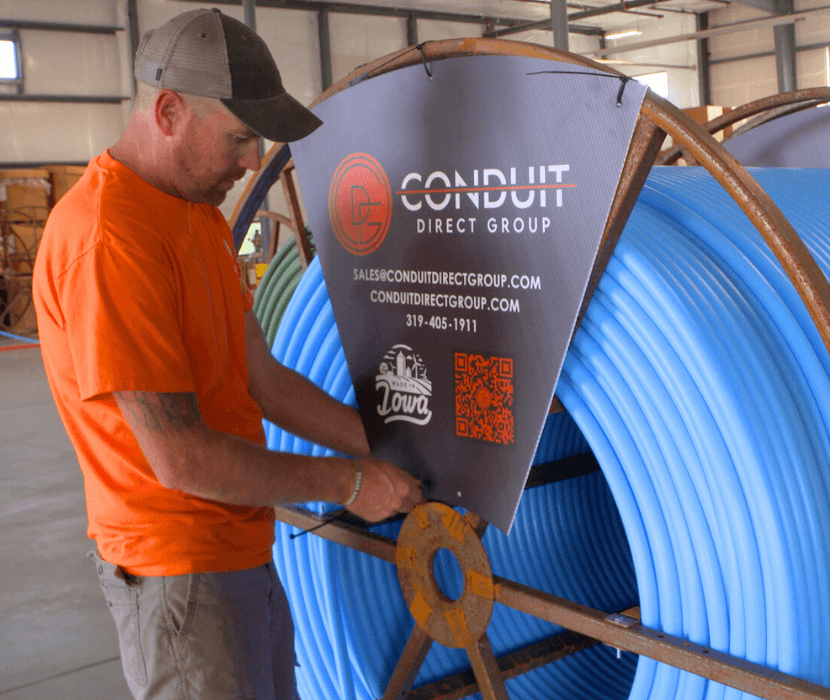
Innerduct Conduit
Providing high-quality HDPE innerduct conduit to the US in a variety of options and sizes.
Why choose us for your Innerduct Conduit?
Conduit Direct Group’s high-quality HDPE innerduct conduit is engineered for exceptional performance, reliably protecting fiber optic cables and other data or communication transmission lines to ensure long-term, dependable service.
Competitive Pricing
Our in-house manufacturing allows us to reduce costs beyond what most suppliers can offer, savings we then pass along to our customers.
Customized Orders
In-house manufacturing gives us the flexibility to offer a wider range of customized options and deliver them faster than most suppliers.
Short Turn-Around Time
We’re committed to getting your conduit to you when you need it, recognizing the importance of efficient job site operations.
Options for Innerduct Conduit
Engineered for superior durability, our conduit withstands harsh conditions like UV radiation, water, and extreme temperatures. Its robust construction resists abrasion and scrapes, ensuring long-term reliability. Explore our custom order options below.
Conduit Types
Smooth Wall
Interally Ribbed
AVAILABLE SIZES
.75″, 1″, 1.25″, 1.5″, 2.0″
Wall Types
SDR9, SDR 11, SDR 13.5, SCH40
Optional Add Ons
Pre-Installed Pull Tape – 1/2” 1250 lb
Or call (319) 450-1911 to talk to one of our experts!

Innerduct Conduit Use Cases
Offering superior strength, flexibility, and resistance to environmental damage, HDPE conduit provides reliable and durable protection for vital fiber optic cables and communication infrastructure, making it the ideal choice for the following industries:

Telecom
We provide durable, industry-compliant conduit solutions, enabling telecom providers to meet deadlines and future-proof their networks for growing data demands.

Internet Service Providers
We provide secure pathways for fiber optic cables and other communication infrastructure to ensure long-term reliability and performance.

Frequently Asked Questions
Find answers to all your questions about our HDPE conduit offerings below. If you can’t find what you’re looking for, contact us.
What is Innerduct?
Innerduct refers to a subduct or smaller conduit positioned within a primary, larger conduit. Its purpose is to provide segregated and protected pathways for fiber optic cable deployments, a frequent method for managing cable infrastructure in telecommunications.
What are the cost advantages of using HDPE Pipe and Conduit?
Reduced Installation Costs:
- Easy bending for trenchless installation
- Fewer joints needed for longer lines
- Strong, leak-proof heat-fused joint
Long-Term Savings:
- 50+ year lifespan reduces replacement costs
- Superior impact resistance, especially in cold weather
- Lower cost and weight compared to metal pipes
Why get a quote for Innerduct pricing?
Accurate Budgeting: Pricing can vary significantly based on the type of innerduct (HDPE, PVC, riser-rated, plenum-rated), size, length, and any additional features like pre-installed pull tape. A quote will give you the precise cost for your specific project needs, allowing for accurate budgeting.
Volume Discounts: Depending on the quantity of innerduct you need, suppliers may offer volume discounts. Getting a quote allows you to inquire about potential cost savings for larger orders.
Customization Options: Innerduct can come in various colors and with different features. A quote allows you to specify any custom requirements and receive pricing tailored to those specifications.
HDPE Conduit Sizing and Innerduct Capacity
- NEC Guidelines: The National Electric Code provides guidelines for the number of conductors allowed in a conduit based on its diameter.
- Casing Pipe Fill: The maximum recommended fill for a casing pipe is 70%. However, the optimal fill percentage depends on the run’s length and complexity.
What are the benefits of using Innerduct?
- Enhanced
- Organization
- Superior
- Protection
- Simplified Cable Installation and Replacement
- Future-Proofing
- Clear Cable Identification
- Separation of Services
- Improved Airflow (in some applications)
- Compliance with Regulations
- Cost-Effective in the Long Run
- Reduced Risk of Damage During Pulling
REEL RETURN PROGRAM
Locate reels that meet the Acceptable Guidelines and return them for cash. Reusing steel reels is environmentally friendly and cleans up the work area. Reels in good condition can be sent back to Conduit Direct Group for reuse.

